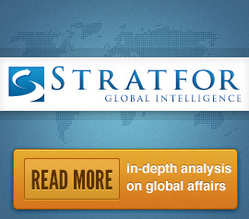Italy, for its part, will not be invited to the party this time around. For one, it lacks the same geopolitical circumstances, safely shielded as it is behind an Alpine wall. Moreover, the eurozone's third-largest economy has been at the center of both the sovereign debt and the immigration crises, and Germany in particular will be as reluctant to stay attached to the indebted Italy as it is to remain tied to Spain. The Franco-German-Benelux bloc is the likely heir to the euro, if the currency continues to exist, and it will maintain the European Union's integrationist ethos. It will adopt a more positive stance toward free trade than its predecessor, with the Netherlands and Germany outweighing the protectionist urges of Belgium and a France shorn of its traditional Mediterranean allies. This "core" bloc will be the Continent's center of gravity in the future. In the times that it has been whole since its unification in 1871, Germany has dominated the Continent, and it appears set to keep doing so for at least the next decade or two.

Germany's influence in Europe is not purely geopolitical. A large part of it is based on trade. The past two decades in particular have seen Germany assemble a powerful international goods factory. It takes unfinished products from its neighbors (eight of whom send Germany more than 20 percent of their exports) and transforms them into sophisticated mechanical goods before shipping them onward. In 2014, Germany was the number one export destination for 14 of its 27 EU peers, and the top source of imports for 15 of them. Access to this machine has especially benefited former communist states in Central and Eastern Europe, which have capitalized on high levels of investment from Germany (as well as the Netherlands and Austria) and capital inflows to achieve impressive GDP growth. European Union or no, the players in this network will all be highly motivated to keep it running.
Eastern and Western Interests Diverge
Still, there are two catches. The first is immigration. The subject has hung over these relationships since at least the 2004 enlargement, when Germany was one of several countries to impose restrictions on the freedom of movement for new eastern members. The influx of refugees into Europe has recently rekindled this friction, with the Visegrad Group (Hungary, Slovakia, the Czech Republic and Poland) bonding over a mutual aversion to Germany's attempts to dole out quotas of newly arrived migrants. The relationship emerging to Germany's east and southeast is one in which the free movement of goods and capital is encouraged, but the free movement of people is restricted.
The second catch is Russia. Over the next decade, Russia will experience some significant changes in both its external relationships and its internal systems. The first half of this forecast has already come to pass, and Russia has grown increasingly belligerent in its periphery. Stratfor believes this will become more pronounced until the system designed by Russian President Vladimir Putin either adapts or collapses. This will clearly have a considerable effect on Russia's European neighbors, albeit to varying degrees. And so, geography will come into play once more. We have already seen the Russian military used to powerful effect in Ukraine, but its ability to push farther into Romania is somewhat tempered by the Carpathian Mountains, a natural barrier that snakes north and west, also providing protection to Hungary and Slovakia. Poland, by contrast, stands starkly exposed to Belarus, a close Russian ally, with no mountain range to shield it. Farther north, the similarly unprotected Baltic states lack Poland's bulk and thus have even less protection; a larger country like Poland could at least buy time to organize a defense.
This geographic divergence will divide Central and Eastern Europe into two groups, one focused on trade and the other on security. The Central Europeans (the Czechs, Hungarians, Romanians, Bulgarians and Slovaks) will be wary of antagonizing Russia. The Carpathians, though a barrier, are not insuperable. And yet these countries, sheltered by the mountains, will also be free to focus much of their energy toward pursuing continued prosperity through trade with the core. A shared interest in maintaining trade with Germany is not the foundation for a defined bloc, but more the makings of a loose grouping that becomes weaker with both distance from Germany and time, as Germany's strength begins to wane. Poland and the Baltics, by contrast, will not have the luxury of focusing primarily on their own enrichment. With Russia's presence looming, these countries will be bound closely together, focusing their energies on defense pacts and alliances - and especially on cultivating strong relationships with the United States. Trade will continue, of course, but the identity of this bloc will center on resisting the Russian threat. If and when internal challenges force Russia to turn its attention inward, Poland will have an opportunity, the likes of which it has not seen for several hundred years, to spread its influence east and south into the former territories of the old Polish-Lithuanian Commonwealth in Belarus and Ukraine.

In the north, Scandinavia will form its own bloc. Its members have a history of shared empires, free trade, freedom of movement agreements and a (failed) currency union; they are natural bedfellows. Indeed, an institution that has been somewhat dormant since the rise of the European Union - the Nordic Council - already exists to aid their international governance. This bloc is likely to be almost or equally as integrated as the French- and German-led core, with which it will have close trade and diplomatic relations.












